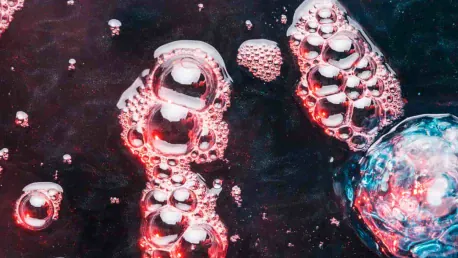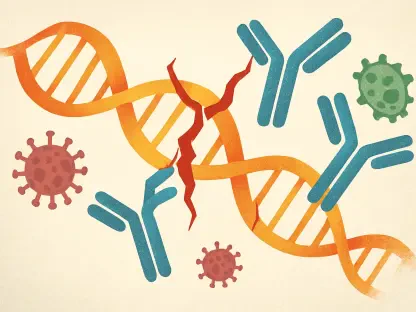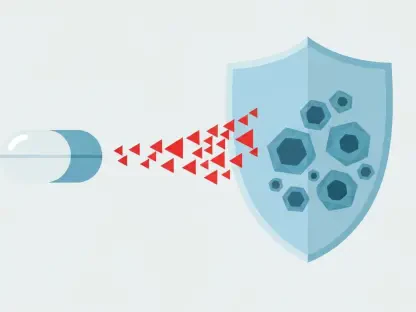The fight against advanced melanoma, a particularly aggressive form of skin cancer, has long been hindered by the cancer’s ability to develop resistance to conventional treatments. However, a groundbreaking study led by QUT researchers at Brisbane’s Translational Research Institute (TRI) offers a glimmer of hope. This pioneering research delves into the potential of antimicrobial peptides, found in a Brazilian tarantula and a Japanese horseshoe crab, to combat melanoma cells that have become resistant to existing therapies. The study’s results have been published in the journal Pharmacological Research, marking a significant advancement in the ongoing battle against one of the deadliest forms of skin cancer.
The Challenge of Melanoma Drug Resistance
Melanoma’s notorious resistance to treatment poses a significant challenge in oncology. Traditional therapies often lose their effectiveness as cancer cells adapt and survive. This resistance not only diminishes the success rates of current treatments but also complicates the development of new therapeutic strategies. The need for innovative solutions is urgent, as advanced melanoma continues to claim lives despite medical advancements. This drug resistance originates from the cancer cells’ ability to change their genetic makeup in response to treatment, effectively neutralizing the therapeutic agents designed to kill them.
The complexity of melanoma drug resistance extends beyond just genetic changes. Cancer cells can also adopt various survival mechanisms, creating a hostile environment for conventional therapies. This multifaceted resistance underscores the importance of finding new strategies that can bypass or overcome these defense mechanisms. The urgency is compounded by the increasing incidence rates of melanoma, which necessitates a breakthrough that can provide more durable and effective treatment options for patients.
Nature’s Antimicrobial Peptides: A New Hope
The study focuses on antimicrobial peptides, naturally occurring molecules that organisms use to fend off bacterial infections. Researchers identified peptides from a Brazilian tarantula and a Japanese horseshoe crab, which showed promise in killing melanoma cells. These peptides were modified to target and disrupt the cell membranes of melanoma cells, including those that had developed resistance to other treatments. By leveraging nature’s evolutionary design, scientists have found a way to hijack these peptides’ innate properties and repurpose them for combating cancer.
These antimicrobial peptides exhibit a natural ability to penetrate cell membranes, a trait that is particularly valuable in targeting melanoma cells. The researchers harnessed this capability, tweaking the peptides to ensure they selectively attacked cancer cells while sparing healthy ones. The fact that these peptides could be modified to maintain their efficacy against resistant melanoma cells indicates a versatile and potent tool that could redefine the landscape of cancer therapy.
Key Findings from the Pre-Clinical Study
Published in the journal Pharmacological Research, the pre-clinical study revealed that these peptides could effectively kill melanoma cells derived from mice models. Remarkably, the peptides were successful against both proliferative and dormant melanoma cells, as well as those that had gained resistance to other therapies. This broad-spectrum efficacy is a significant breakthrough, as it suggests that these peptides could overcome one of the biggest hurdles in melanoma treatment. The ability of these peptides to eradicate dormant cells is particularly noteworthy, as these quiescent cells often evade traditional therapies and serve as a reservoir for cancer relapse.
Furthermore, the speed at which these peptides act is another critical factor. The rapid disruption of cancer cell membranes prevents the cells from activating their defense mechanisms, which is a common pitfall for many other treatments. This swift action means that the chance for melanoma cells to develop resistance to these peptides is significantly lowered. The pre-clinical trials used various melanoma cell lines, adding robustness to the findings and further underscoring the peptides’ potential as a universal treatment for melanoma drug resistance.
Mechanism of Action: Disrupting Cancer Cell Membranes
One of the most promising aspects of these peptides is their mechanism of action. Unlike other treatments, cancer cells did not develop resistance to these peptides. This is likely due to the peptides’ ability to rapidly target and disrupt the cell membranes of cancer cells. By attacking the cell membrane, the peptides prevent the cancer cells from adapting and surviving, offering a potential solution to the problem of drug resistance. The peptides’ ability to destabilize the cancer cell membrane sets off a cascade of events that lead to cell death, ensuring a swift and thorough elimination of the malignant cells.
This mode of action is distinct from that of traditional chemotherapies, which often target specific cellular processes or genetic pathways. By focusing on the physical structure of the cell membrane, these peptides sidestep the usual routes through which cancer cells build resistance. This unique approach not only makes the peptides highly effective but also less likely to fail over time. The study’s findings indicate that the peptides cause immediate and irreversible damage to the melanoma cells, a crucial factor in preventing the recurrence of the disease.
The Role of Evolutionary Design
Associate Professor Sonia Henriques, the study’s last author, emphasized the potential of leveraging nature’s evolutionary design. These peptides, originally evolved to combat bacterial infections, were repurposed to target melanoma cells. The study highlights how evolutionary processes can inspire scientific advancements, providing a treasure trove of potential therapeutic agents that can be modified and stabilized to improve human health outcomes. The evolutionary success of antimicrobial peptides in protecting organisms from bacterial threats serves as a testament to their robustness and adaptability, qualities that are now being tapped to fight cancer.
This innovative approach exemplifies the concept of biomimicry, where strategies and designs from nature are adapted to solve complex human problems. By understanding and replicating these natural mechanisms, scientists can develop therapies that are not only highly effective but also inherently safer and more sustainable. The evolutionary journey of these peptides, from bacterial defenders to cancer warriors, underscores the untapped potential that lies within natural biological processes, inspiring future research and development in oncology.
Future Directions and Research Goals
Despite the promising findings, the researchers acknowledge that further extensive research is needed before these peptides can be used in clinical settings. The next steps involve making these peptides more potent and capable of not only disrupting cancer cell membranes but also penetrating them to target cancer progression pathways internally. This enhancement could significantly improve the peptides’ therapeutic potential. By focusing on the peptides’ ability to interfere with intracellular pathways, researchers hope to develop a multi-faceted attack on melanoma, ensuring that the cancer cells are thoroughly eradicated.
To achieve this, advanced molecular engineering techniques will be employed to fine-tune the peptides’ properties, enhancing their stability, selectivity, and overall potency. This process will involve iterative testing and optimization, aiming to create a new class of cancer therapeutics that are both powerful and safe. The journey from pre-clinical success to clinical application is challenging, but the researchers are optimistic that with continued dedication and innovation, these goals are attainable.
The Road to Clinical Trials
Dr. Aurelie Benfield, the study’s first author, expressed optimism about the future of therapeutic peptides. However, she also noted that practical application will require at least another five years of pre-clinical tests to ensure safety and efficacy. The timeline for human clinical trials could be accelerated with sufficient funding and industry interest, which are crucial for bringing these potentially life-saving treatments to melanoma patients sooner. The researchers are actively seeking partnerships and funding opportunities to expedite the transition from laboratory research to clinical trials.
The pre-clinical phase will encompass a series of rigorous tests, including toxicity assessments, dosage optimization, and long-term efficacy studies. These steps are vital to ensuring that the peptides not only work effectively but also do so without causing adverse side effects. The research team is committed to maintaining the highest standards of safety throughout this process, keeping patient well-being at the forefront of their efforts. The ultimate goal is to establish a solid foundation for human trials, paving the way for these innovative therapies to enter mainstream cancer treatment.
The Promise of Therapeutic Peptides
Advanced melanoma, an especially aggressive type of skin cancer, has historically been challenging to treat due to its tendency to develop resistance to standard therapies. However, a revolutionary study conducted by QUT researchers at Brisbane’s Translational Research Institute (TRI) brings renewed hope. This cutting-edge research explores the effectiveness of antimicrobial peptides, which are found in a Brazilian tarantula and a Japanese horseshoe crab, in fighting melanoma cells that have grown resistant to current treatments. The findings, published in the journal Pharmacological Research, signify a crucial breakthrough in the relentless fight against one of the most lethal forms of skin cancer. By harnessing these peptides, scientists hope to open new pathways in melanoma treatment, potentially improving patient outcomes and offering a new lease on life for those affected by this formidable disease. This pivotal research underscores the importance of innovative solutions in the battle against cancers that have traditionally evaded existing medical interventions.









